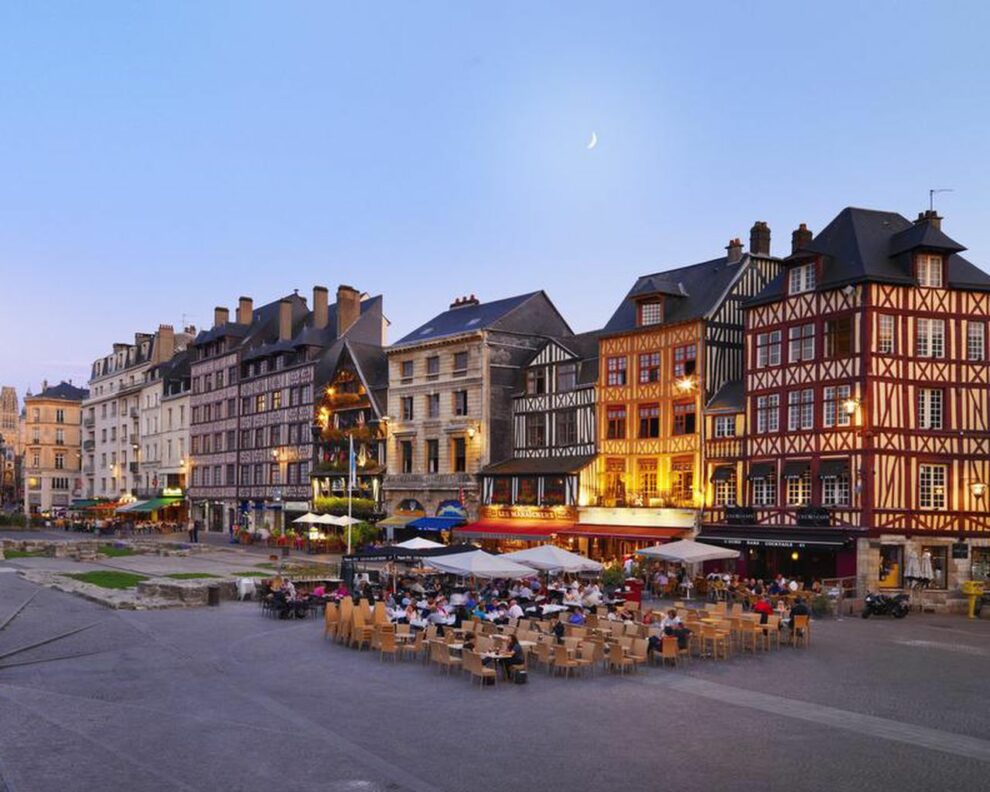Experiencing the local food and drink is one of the central joys of travel, with a destination’s gastronomy ranking among the top three reasons — after culture and nature — influencing tourists to visit a place, according to a report by the World Tourism Organization.
To whet your appetite, here are just a few less-hyped culinary destinations — all named “Creative Cities of Gastronomy,” a UNESCO-granted distinction, during the pandemic.
Rouen, France
Why go: A port city on the river Seine in northern France, Rouen is the capital of famously delicious Normandy — the region is the birthplace of creamy Camembert, Calvados brandy, Pays d’Auge apple cider and many other gastronomic inventions. If you visit in mid-October, you can partake in Rouen’s annual “Belly Festival” (la Fête du Ventre). Held in the historic quarter, it brings together an estimated 160 producers, who share their cheese, chocolate and other delights with more than 150,000 visitors. If you come any other time of year, you can always create your own self-guided tour of the city’s roughly 250 restaurants.
Launceston, Australia
Why go: Launceston lies in northern Tasmania, Australia’s island state, right in an agricultural heartland. The riverside city is charming in its own right (see: the 19th-century heritage architecture), but for gastro-tourists, it’s perhaps best known as the gateway to Tamar Valley, noted for its farms, orchards and wine country, which starts about a 15-minute drive away. The bucolic cool-climate region is home to more than 30 vineyards and wineries, which dot both sides of the meandering Tamar River. Many of the cellar doors are boutique operations, and the valley is especially recognized for its Chardonnay, Pinot Noir and some of Australian’s most acclaimed sparkling wines.
Santa Maria da Feira, Portugal
Why go: Lisbon and nearby Porto may be better known, but it’s the smaller Santa Maria da Feira that has snagged UNESCO’s sole City of Gastronomy title in Portugal. Noted for its medieval castle, the city’s signature delicacy is also historic: a sweetened white bread known as fogaça da Feira, its shape evocative of a castle tower. It originated as an offering from the locals to Saint Sebastian in their bid to keep away the black plague. The specialty bread is still celebrated every January during a popular traditional religious festival, the Festa das Fogaceiras. Since Porto is only about a 30-minute drive away, you’d be remiss not to visit that city for its own culinary inventions, like the sauce-drenched francesinha sandwich.
Thessaloniki, Greece
Why go: Thessaloniki is the second-largest city in Greece, and the country’s first UNESCO City of Gastronomy. Its east-meets-west location and status as a historic trading port mean multiple empires over the ages have left their cultural and culinary imprints. The distinctive local treats to try include bougatsa (sweet or savoury pastry pie, often custard-filled) and trigona panoramatos (phyllo triangle cones with custard cream). Landmarks include the historic Modiano Market, a large covered food market now home to some 75 shops right in the city centre, which reopened last year after a thorough restoration.
Source: The Spec









